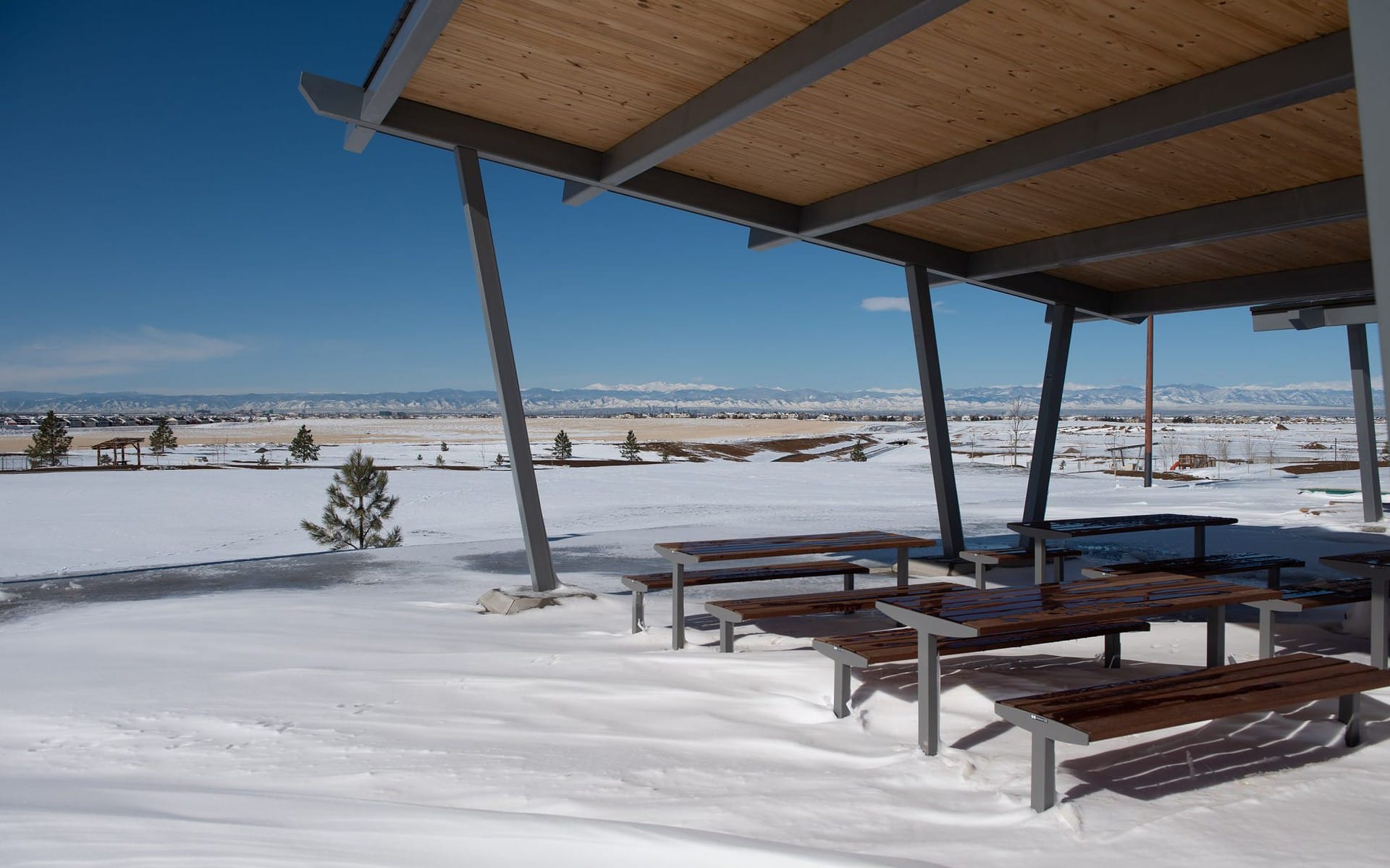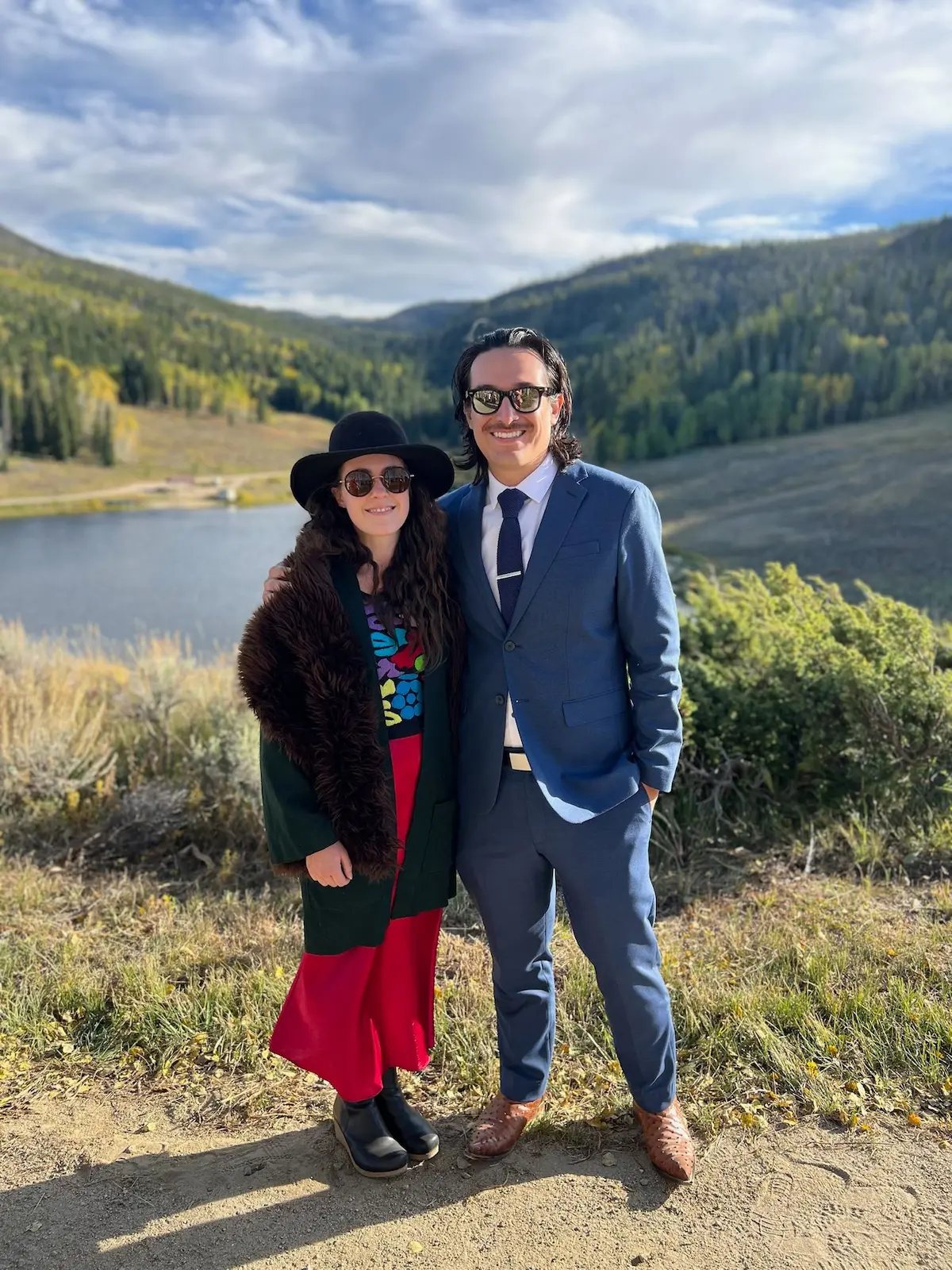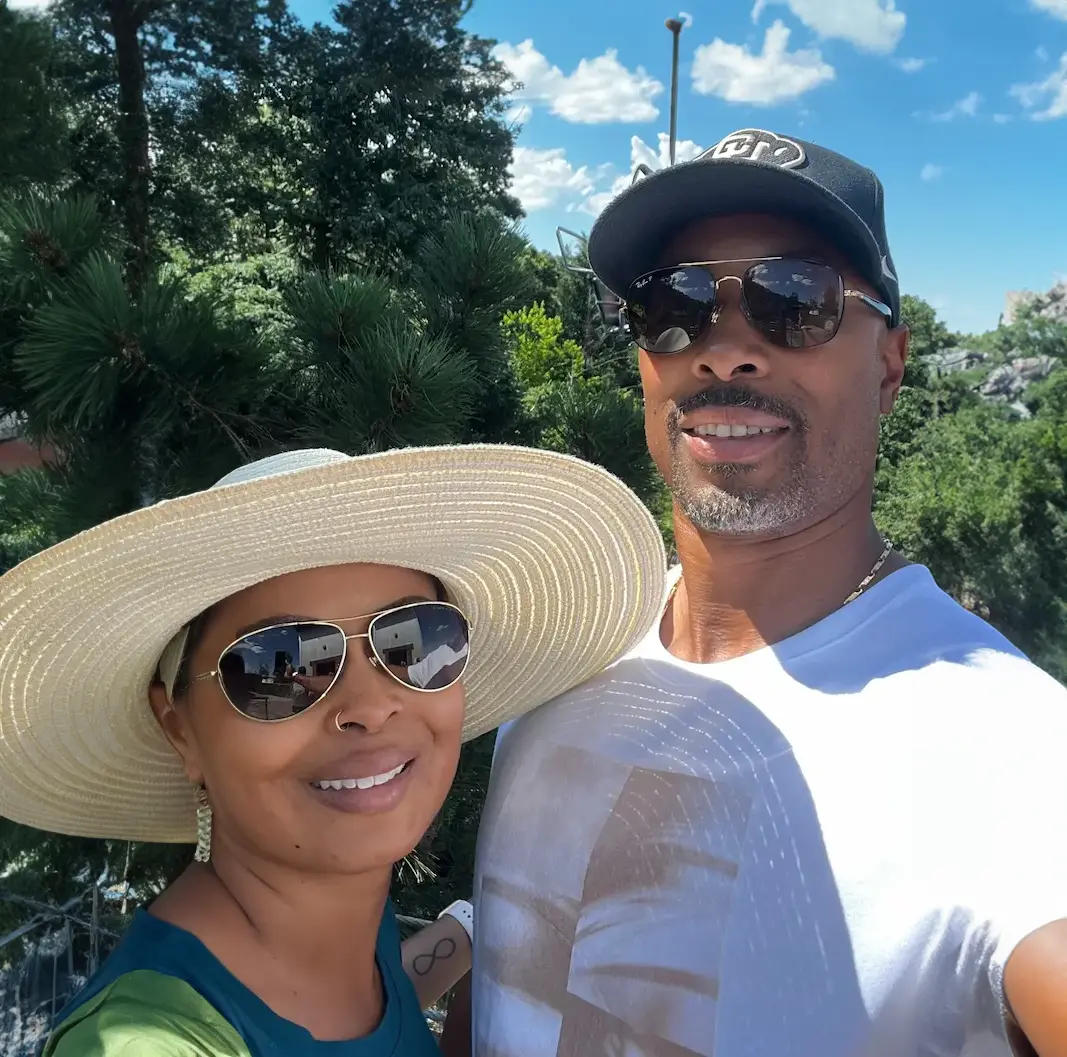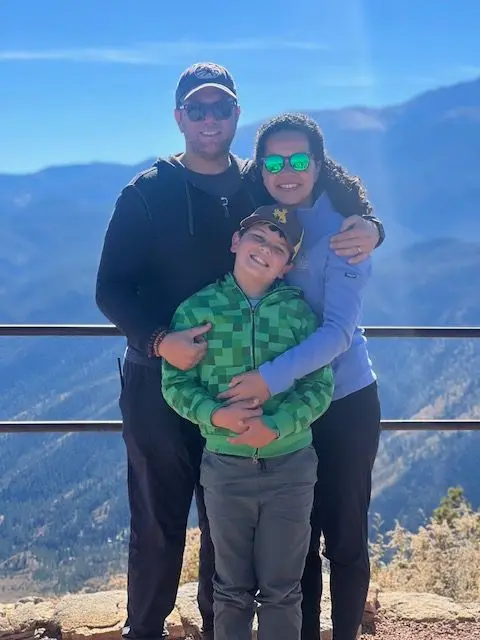Our biggest event of the year is October 7—Prairie Harvest Fest!

Step inside the details behind Painted Prairie and its park system with Craig Vikers of Civitas, as he explains his vision and focus behind the design.
The tenacity, drive, and will to succeed in this harsh but beautiful landscape are remarkable parts of the Colorado saga, but they can be so easily overlooked!
For me personally, to find inspiration for the design of the High Prairie Park was not difficult. I grew up exactly (as a crow flies) 17 miles south of Painted Prairie in a similar environment. Imagine rolling prairie with arroyos, cottonwood galleries and ponderosa pine stands. I won’t lie, this was an incredible place to grow up! I loved playing hide and seek in the winter wheat fields at night before harvest. As a little kid the mature wheat was over my head. All you could see while you were running around was the wheat falling in front of you, and that made for wild game to be certain. Granted, not something the farmers appreciated, but truly thrilling and only something you could experience in the prairie.
Imagine a great snowstorm where high winds would fill the arroyos up with snow to the point where you could run and jump into drifts eight feet deep. Or imagine catching frogs and salamanders in the nearby stock pond (sadly I don’t hear that sound much anymore) or building forts and treehouses in the pines and cottonwood galleries that occupied the ground where water collects, or simply pulling out the stamens of the Indian paintbrush flower in the summer to taste the sweet nectar. For me this was commonplace—this is what I recall. My memories and experiences growing up in this environment are diverse and interesting but also familiar and comfortable, as this landscape offered all I could want. Yet, at a glance, it appears to be simple and even dull to someone who visits from other places or climates. But here we are, and people like my parents have decided to make the prairie their home.
This is exciting to me, as I would like others to experience here in Painted Prairie what I was fortunate enough to have as a kid. However, it’s not that simple as the density of homes and the necessary language of streets, lights, signs, and fences by nature diminish the qualities that make the seemingly dull prairie landscape so beautiful and so impactful. What a challenge! This is why it is so important to create parks and open spaces that are authentic and true to this place. The entire development/design team had to be focused on ensuring the values, spirit and the prairie aesthetic would be fully integrated into every home, every street, and every public space. The design is nuanced and it’s thoughtful, but what makes it special is that it truly comes from the love of the prairie—all that comes with it and all that is absent.
I first considered what would make a memorable park at Painted Prairie. For me, inspiration starts with the notion that human settlement here at a community scale, unless nomadic in nature, is nearly impossible. Limited resources such as water and timber and the sheer vastness of this treeless landscape renders this environment unlivable without exceptional human ingenuity, bold vision and guts. Consider for a moment what is required to make this land not only livable, but productive, and productive at a global scale, you soon realize how herculean the effort to settle here was.
Seventy-one miles of the Highline Canal was dug by hand to deliver water from Waterton Canyon to this arid prairie to make crop production possible, railroads delivered necessary goods, human resources and dreams to make commerce possible, all while people tried damn hard to make a go of it. An incredible challenge to say the least, but it did come with some cost—the cost to the indigenous peoples who traveled and lived off this land and cost to the landscape itself. What was once a hardened and delicate self-sustaining ecosystem of flora and fauna is now one of the world’s breadbaskets, delivering grain and produce globally as well as locally.
Now fast forward a hundred and fifty plus years. Today over 500 thousand-acre feet of water is diverted to the Front Range from west of the Continental Divide annually to support multiple communities with rich and diverse economies. Now that’s what I call bucking grade! We have the ability to travel rapidly within the region and navigate the globe with ease, as well as to import and export ideas and products. We are completely interconnected now. We all can argue whether it is right or wrong, but it is where we are at right now. I would argue it is a part of what makes us special and unique. Yes, we definitely have to think hard now about how to manage our precious resources moving forward, but if we apply the same work ethic and pioneering spirit we have applied elsewhere, then we are certain to succeed. With this rapid pace of cultural, social and economic advancement, what was once simple has become complex. Yet, it still is our distinct high plains prairie, boasting continental-scale mountain views and a lifestyle that is still rooted in the DNA of this landscape. It’s tough but delicate, it’s bold but poetic, it’s colorful and muted.
This land has an incredible story that wants to be told. This also inspired me! As a designer, I placed my passion and focus to imagine a neighborhood and a signature park system that not only gives you glimpses into the history of this romantic and evolving story, but also lays the groundwork for people to make their own memories, build new traditions, and tell their own story—all within a context that is new and time tested simultaneously. For Painted Prairie, I sought to develop a design expression that would be fresh and compelling to people because of its graphic beauty and materiality, but I felt the design should come from elements of life on the prairie that has given this region its form and character.
Have you ever noticed the beautiful circles and squares that quilt the landscape from an airplane window? And have you ever noticed the pattern lays perfectly in a grid and if there are amorphous shapes that bust the grid, you can bet that a rock outcrop or a drainage way, a stream or lake is responsible. This, of course, is due to how our founders planned the west. The Jeffersonian Grid defines a basic road network that is laid out on a one square mile grid. Within it, the land is broken down and subdivided for an array of uses, including agriculture, which is by far the most dominant land use in our prairie environment. In 1948, a game-changing advance in agricultural irrigation—the ‘Central Pivot Arm’—transformed an arid landscape fed by well and canals (and full of opportunity) into a highly productive continental-scale garden. In the design of the park, these patterns are expressed, but the use has been reinvented to make a place that people can enjoy for recreation.
A system of Urban Pivots captures the graphic tapestry of our agrarian landscape, but what we hope to harvest here is laughter, family time and the fruits of a tight-knit community. The Urban Pivots are integrated into sweeping prairie dunes, arroyos and a bluff landform we call The Sunset Ridge Promenade. The promenade features shade pavilions, a lofted sand beach, and a variety of gardens designed to attract people to play together, enjoy solitude, and to encourage roaming and exploration. The diverse array of park places and activities all celebrate what it means to live on the prairie, play in nature, and relish the incredible views and unbelievable skyscapes that demand our attention—even if we often miss due to our busy bustling lives.
So, where did this all lead?
If you pay attention, the land tells you what it wants to do. For example, the last mile of the Highline Canal I mentioned earlier runs south to north through the western part of the Painted Prairie site. And if you walk that last mile, you will soon recognize that the human effort to dig the canal by hand from its source 71 miles away to carry water at a nearly flat pitch is simply incredible! Oh my God, how did they do that without dozers and heavy machinery? If you don’t know the story, it appears to be just another ditch. You can jump across in places or not even notice it at all, and what does it matter? Well, actually this little ditch and others like it mean everything to the modern story of the Great Plains and how they were settled!

Earlier, I told you about a natural ridge feature in the park. It sits about sixty vertical feet above the ‘Last Mile’ and what it offers. But what I didn’t mention is a panoramic and unobstructed view to the Front Range of the great Rocky Mountains. From here you can see over 150 miles of the continuous mountainscape, just a small portion of the mountain range that completely divides our continent. An incredible view indeed, but there is so much more to consider at this moment. This is why ‘The Ridge’ is the center of the park. My personal passion was to allow folks to walk this ¼ mile-long promenade to enjoy those mountain views on one side and contemplate how those mountains impact life here on the prairie. In simple terms, those mountains are what starve this landscape of water, thus the prairie. Yet through human ingenuity and creativity, we have engineered systems to convey that water from those mountains to our kitchen sinks. Again, that’s a remarkable feat.
As you stroll the ridge to its northern terminus you will find a great place to sit on old’ time ski lift chairs and view those white-capped peaks that harness that precious ‘White Gold’ that is so necessary for us to survive all the way out here. It’s our relationship to those mountains and the resources they offer that create such a diverse economy rich with industry and commerce here in the prairie. It’s fun to think that the same water that makes crop production possible way out here is also harvested to produce so much fun and enjoyment! Carving turns, throwing a double daffy, and soaking up a bluebird day on the boards is a deep part of our collective culture, whether you actually ski or not. When you swing in the lift chairs you will view not only the ski resorts that you’ve come to know and love, but you will also learn about the resorts that have gone away. Places like Ski Pikes Peak, Ski Broadmoor or Hidden Valley Ski Area in Rocky Mountain National Park. In most parks around here with mountain views, you will find a plaque that shows the mountain panorama and identifies every peak in view that’s over 14,000 feet above sea level.
Just to mix it up a bit, here at Painted Prairie, we focused on revealing the resource that makes life here great including those resorts but also the water reservoirs, lakes and streams that bring water to the great plains. Anchoring the opposite and Southern end of the Ridge Promenade are the Community Gardens and Butterfly Landing. Here we wanted to offer the community a place to make their park productive, dig in the dirt a little, and share a harvest together. This is the domestication of the prairie at work, but more importantly, it’s about building a community around the same values our settlers had.
There is however a more insular story to tell here as well. The collective development/design team wanted to create an ‘arroyo’ that captured the erosive nature of water moving over soft soil. The carved and hollowed landscape supports multiple species of both plants and animals as well as the silhouette of trees that support so much birdlife. Here we want you to immerse yourself in and discover a micro world that is common in the prairie. Catching butterflies or Prairie Skippers, sledding down a hill after a big storm, or harvesting fruit along the Ridge are experiences that people will cherish all seasons of the year. It’s interesting that way; I wanted the park to have many experiences, but I wanted them to be discovered as the park unfolds. It’s deliberate that while playing in the arroyo, you get a glimpse of another feature in the park hundreds of feet away—or vice versa. This is how we intended the park to be used: all visitors bouncing from one feature to another and finding places they want to stay and hang out depending on the time of year, what’s happening in the park, or personal preference.
I genuinely wanted this park and the other pocket parks in the neighborhood to be dominated by the native prairie landscape but juxtaposed with the domesticated elements and forms that shaped the prairie today, while celebrating the pioneering spirit that forged the heartland. To me that is what makes the park authentic! But I also want High Prairie Park to be responsible and set an example for how to use water in this region and honor the simple beauty of this land. I have always felt that our native prairies are gorgeous and the import of design aesthetics from other places as a means of changing the prairie into something it’s not is fundamentally flawed. I’ve always wanted to help to create a design aesthetic in our region that is uniquely ‘Front Range Colorado’ because of the obvious conservation reasons but also to expose or even amplify what is so amazing about our western landscape. Don’t get me wrong—there is a place for the imported and the exotic, but all in good proportion. After all, people always bring something to the landscape they inhabit, and of course, that is how culture is formed. From the Arapaho tribe to the settlers to the new residents of Painted Prairie, our goal is to reveal this richness, tell some stories, and more importantly, leave some pages blank for others. Hopefully, we succeeded in this endeavor.

So, with that, let me tell you about some of what I think will be my favorite places in the park. If our team got it right, your favorite will be different from ours. It’s hard to predict how this community will make this park their own or what traditions might evolve, but one thing is certain: it will be fun to be a part of!
I am very excited about what we call the ‘Prairie Waives’. This portion of the park is dominated by grand windswept landforms that support tall native grass and hidden moments where families can picnic, and kids can play in nature. In this part of the park, you can become completely immersed in a prairie experience where the horizon meets the sky, uninterrupted by the built environment.
Closest to my heart would be the Arroyo and Promenade Bridge, in this case you can’t have one without the other. Both mark a pivotal moment when walking along the Sunset Ridge Promenade, in that the Arroyo is more of a dynamic feature when you can experience from above as well as below. The sense of enclosure and the framing of distant views by the bridge when you are in the arroyo is really special and, in my opinion, it’s a can’t miss experience when visiting the park.
Back to the grand scale! The Urban Pivots are one of a kind. If you think about what it takes to push a pivot irrigation arm around a ¼-mile turning arc, how can you not be at least a little impressed with this engineering feat? It literally has shaped the landscape of the entire center of our country and transitioned land that was susceptible to tragic losses as experienced in the dust bowl into a highly productive global garden with undeniable certainty. It’s pretty amazing. There are two edges to every sword, and even as this simple invention has helped to maximize crop production, it has also increased water consumption. Why would this serve as inspiration for a park design? We simply believe that it is a part of this great story of determination, ingenuity, and will. It’s, for this reason, we decided to express this landscape form in a juxtaposition with the native landscape. It’s interesting, beautiful and reveals in graphic form something that has clearly been a factor in what life is about on the American prairie. I really want you to feel the scale of this agricultural practice, so we framed the Urban Pivots (which of course were designed at a micro-scale) with an arching walkway that is actually a ¼-mile radius. Our intent is that when you walk this edge you will see and enjoy the patterns of the pivot gardens while you contemplate the scale of an actual ¼ section pivot arm. The radius point, designed by an artist to tell the story of this engineering feat, will pin the focal point of a community garden that is intended to bring people together around the notion of building community through gardening and working the land. In a future phase of the park development, you will see an actual pivot arm segment in alignment radially with the radius point. The pivot arm will be converted into a water/play feature that will shower visitors with periodic blasts of water. I think this will be wildly fun and educational simultaneously.
The Fort? Forget about it! Those are incredible. The design concept was simple, we all love the idea of a treehouse and how adventurous they can feel. It’s like the Swiss Family Robinson, only on the prairie. Heck, I still would like to have one. After the development/design partner conceived of the idea, we all knew we needed to get out of the way and let Beanstalk Builders do what they do. You just have to see them in person! For me to describe them would take too many words and would not do them justice. But my favorite quote from Marcus of Beanstalk, when asked how do you go from a concept sketch to these amazing structures, was simple: “the Log tells us where to go”. Wow, to me that sums up what life on the prairie has always been.
When you choose to settle in a landscape this demanding, you have to listen to what the land is telling you, what it offers, and what its limitations are. This is the fuel for human ingenuity, and I find that inspiring.
Painted Prairie is the only other Colorado community designed by the same team – Civitas and Calthorpe & Associates who successfully transformed Stapleton Airport into a world-renowned success urban redevelopment.

Once we heard of Painted Prairie in 2021, we were hooked! We loved the diversity of the community, the open space, and everything else it has to offer. Our house has very rapidly turned into a home. We actually met some of our closest friends at a Painted Prairie event.

Painted Prairie has become a place that feels like home for my family because of the strong sense of community and the diverse and inclusive atmosphere. It’s a place where we can connect with neighbors, support local businesses, and truly feel like we belong. The shared values of unity, diversity, and sustainability in the community align with what our family holds dear. It’s a place where children can thrive, and we can contribute positively to the community.

Being an active community while bringing us together on the different events throughout the year. We have been fortunate to enjoy the farmers markets, the neighborhood BBQ, the pancake breakfast, the family painting class, movies at the park and the Fall Festival! Our son and dog also love all the parks!